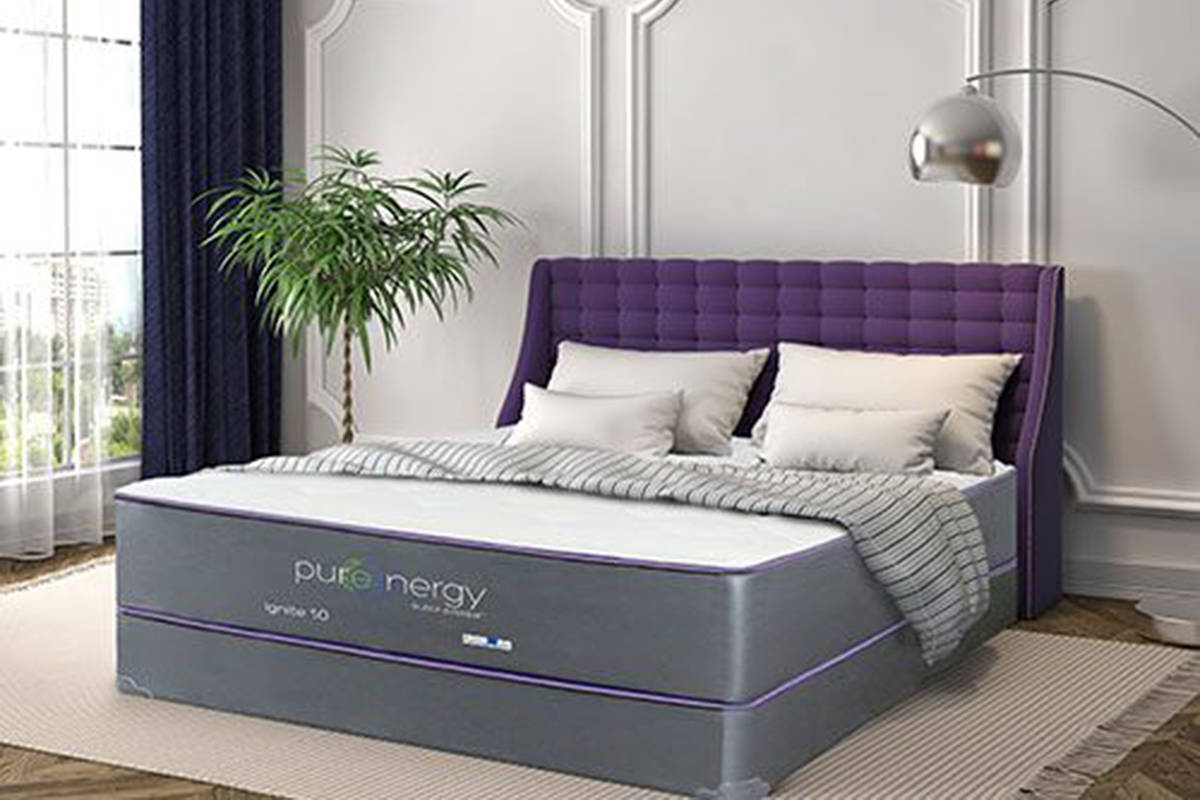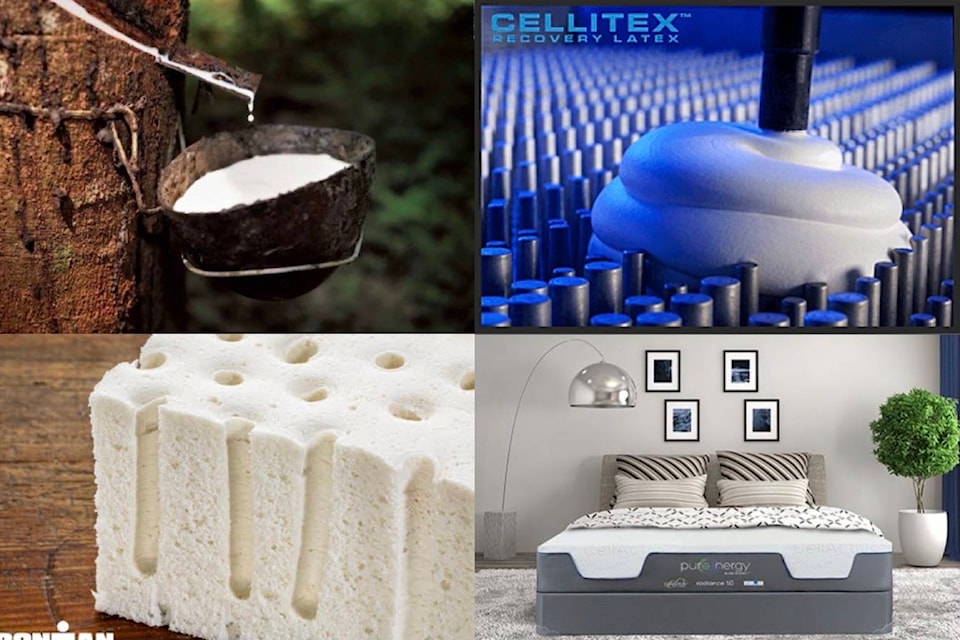Latex, polyurethane, memory foam and springs. Which materials make the best mattress? Mark Nagra, co-owner of White Rock’s WR Mattress Gallery and designer of the BC-made PureEnergy Ironman and Newgen mattresses, has spent years studying different materials and their effects on our sleep. He’s a big fan of natural latex (especially when it’s produced with Celliant technology), and there are many reasons why.
Natural
Latex is made sustainably, from a natural white liquid found just beneath the bark of rubber trees. Foam is a petroleum product.
“North America started to produce a lot more foam when the Second World War ended and there was surplus crude oil,” Mark says. “Memory Foam was invented in the 1960s, but didn’t become popular until about 30 years ago. We used to carry memory foam like most mattress retailers, but put a stop to that after my research showed how many off-gassing chemicals they contained (some of them carcinogenic) and the potential adverse health affects they could have to our customers.”
He says the smell may disappear after a few days, but that doesn’t mean the off-gassing has stopped. There are many harmful gasses that humans can’t smell.
“The studies I’ve read suggest memory foam vaporizes easiest at room temperature — the temperature in your bedroom — and off-gassing may continue for the entire lifespan, as materials break down over the years, right underneath your nose. There also tends to be less air circulation in bedrooms, so there’s less opportunity for gasses to vent through open windows.”
Durable
Latex is the most durable of all mattress materials — you can expect a latex mattress to easily last at least a decade. Foam and spring mattresses with foam are less durable, and can have a significantly shorter lifespan, depending on their density and quality.
“Europeans replace their mattresses less often than North Americans, and about two-thirds of them sleep on a latex mattress.”
Latex is also inherently hypo-allergenic, anti-microbial and dust mite resistant because of it’s breathability and cell structure, which is great news for those of us with allergies.
Plush or firm, density and bounce back
Most people focus on foam density, which is the weight of the material. Mark says the Indentation Load Deflection (ILD) configuration, combined with the density, is more important for the comfort and lifespan of a mattress.
“When you press down on foam, the ILD tells you the force of the bounce back. That gives you a good idea of the support you can expect. I generally recommend a higher ILD for the base of the mattress, with lower ILD layers towards the top in a particular configuration. That will give your body the proper support to reduce pressure-points, soreness, and tossing and turning.”
Both latex and foam can offer a range of ILD numbers, but it’s important to get the right fit for how you sleep. Latex has a linear support structure, which Mark says is better for our bodies.
For help finding a great mattress and a good night’s sleep, talk to the expert staff at WR Mattress Gallery. Visit at the corner of 152nd Street and 24th Avenue in South Surrey, or get inspired at wrmattress.com.

